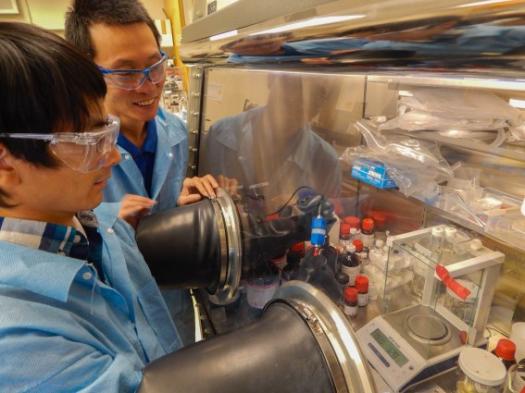Using hydrogen to enhance lithium ion batteries

Lawrence Livermore National Laboratory scientists have found that lithium ion batteries operate longer and faster when their electrodes are treated with hydrogen.
Lithium ion batteries (LIBs) are a class of rechargeable battery types in which lithium ions move from the negative electrode to the positive electrode during discharge and back when charging.
The growing demand for energy storage emphasizes the urgent need for higher-performance batteries. Several key characteristics of lithium ion battery performance -- capacity, voltage and energy density -- are ultimately determined by the binding between lithium ions and the electrode material. Subtle changes in the structure, chemistry and shape of an electrode can significantly affect how strongly lithium ions bond to it.
Through experiments and calculations, the Livermore team discovered that hydrogen-treated graphene nanofoam electrodes in the LIBs show higher capacity and faster transport.
"These findings provide qualitative insights in helping the design of graphene-based materials for high-power electrodes," said Morris Wang, an LLNL materials scientist and co-author of a paper (link is external) appearing in Nov. 5 edition of Nature Scientific Reports.
Lithium ion batteries are growing in popularity for electric vehicle and aerospace applications. For example, lithium ion batteries are becoming a common replacement for the lead acid batteries that have been used historically for golf carts and utility vehicles. Instead of heavy lead plates and acid electrolytes, the trend is to use lightweight lithium ion battery packs that can provide the same voltage as lead-acid batteries without requiring modification of the vehicle's drive system.
Commercial applications of graphene materials for energy storage devices, including lithium ion batteries and supercapacitors, hinge critically on the ability to produce these materials in large quantities and at low cost. However, the chemical synthesis methods frequently used leave behind significant amounts of atomic hydrogen, whose effect on the electrochemical performance of graphene derivatives is difficult to determine.
Yet Livermore scientists did just that. Their experiments and multiscale calculations reveal that deliberate low-temperature treatment of defect-rich graphene with hydrogen can actually improve rate capacity. Hydrogen interacts with the defects in the graphene and opens small gaps to facilitate easier lithium penetration, which improves the transport. Additional reversible capacity is provided by enhanced lithium binding near edges, where hydrogen is most likely to bind.



































